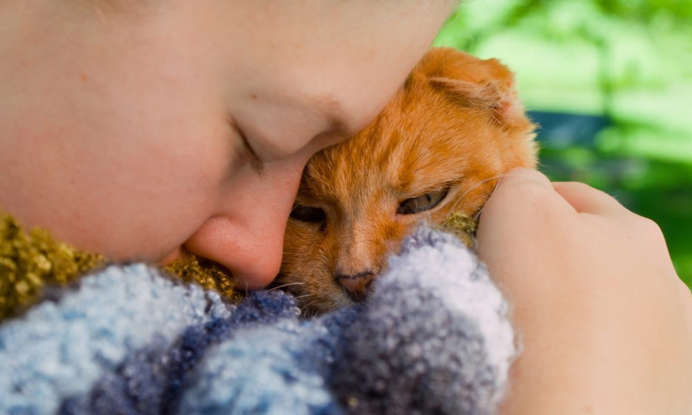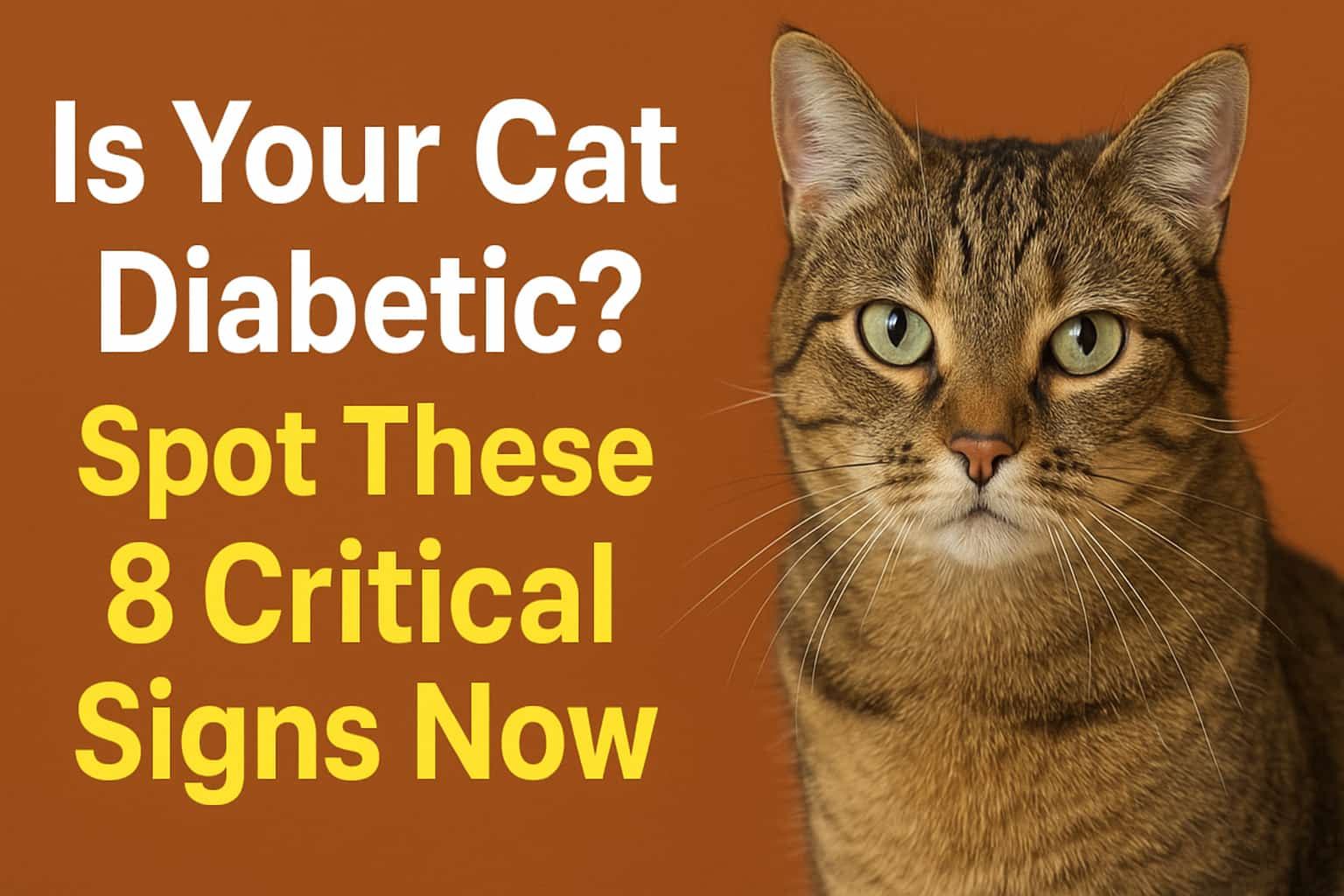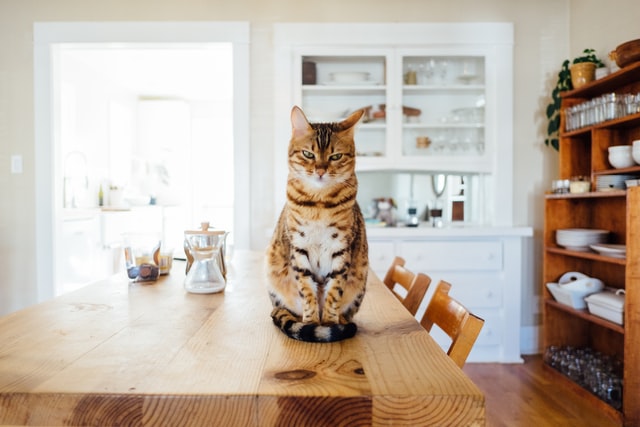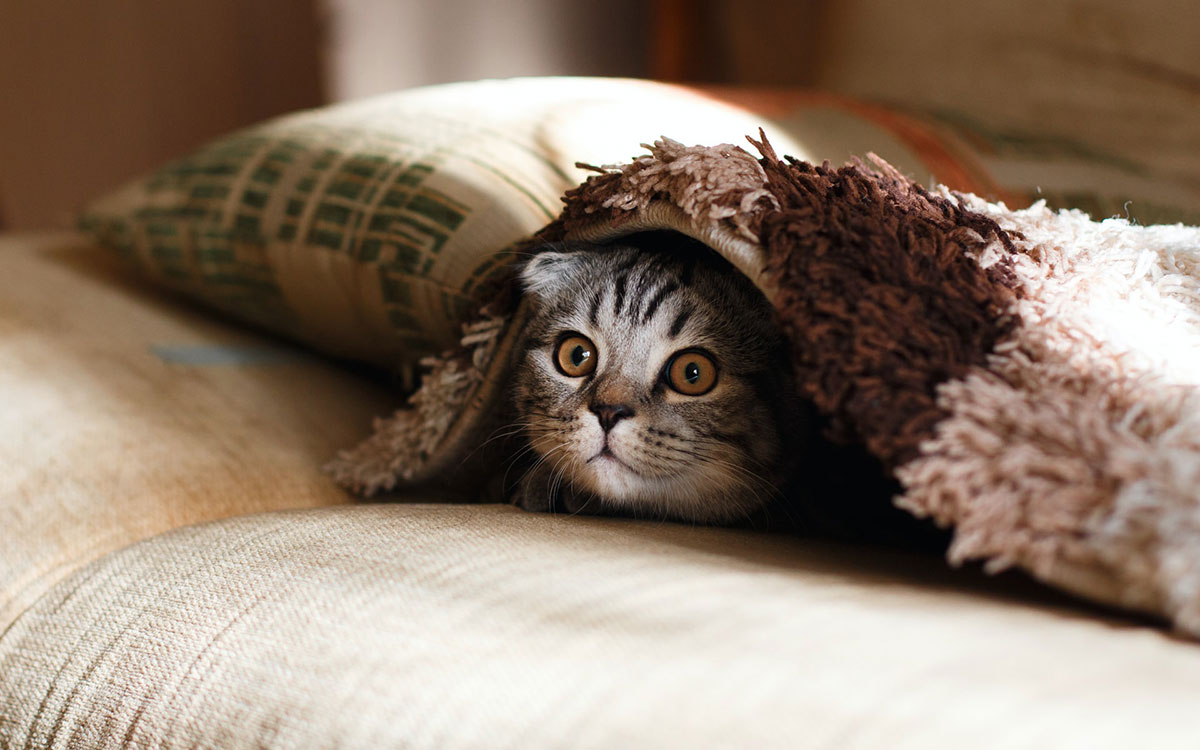Is your cat diabetic? This question concerns many pet owners today.
Diabetes in cats is common, but often undetected. Cats can develop diabetes just like humans. It affects their insulin production, leading to high blood sugar. Early detection is crucial for treatment and care. Without attention, diabetes can harm your cat’s health.
But how can you tell if your cat is diabetic? Recognizing signs early can make a big difference. Cats show symptoms in subtle ways. This blog post will guide you through the signs you shouldn’t ignore. By understanding these signs, you can ensure your cat gets the needed help. Let’s explore these signs and learn how to help your furry friend live healthier.
Signs Of Increased Thirst
One of the early signs that your cat might be diabetic is increased thirst. Cats are generally discreet about their water intake, so noticing a change in their drinking habits can be tricky. Paying attention to subtle shifts is essential, as these can indicate underlying health issues like diabetes. If your feline friend suddenly seems to be drinking more than usual, it could be a red flag you shouldn’t ignore.
Frequent Water Bowl Visits
Have you noticed your cat making more frequent trips to the water bowl? This could be a telltale sign of increased thirst. Cats with diabetes often experience heightened thirst as their bodies try to flush out excess sugar through urination. You might find yourself refilling their water bowl more often. This behavior change is significant and warrants a closer look.
Dry Mouth Symptoms
Another sign of increased thirst in cats is a dry mouth. If your cat’s mouth appears sticky or its tongue seems dry, it might indicate dehydration due to excessive thirst. You could check their gums; they should feel moist and smooth. If they are dry or sticky, it might be time for a vet visit.
Have you ever felt parched on a hot day, constantly reaching for water? Your cat could be feeling a similar need for hydration. Paying attention to these subtle signs can help you catch diabetes early. What changes have you noticed in your cat’s drinking habits lately?

Unusual Weight Loss
Unusual weight loss in cats can signal diabetes, a condition often missed. Watch for signs like increased thirst, frequent urination, and lethargy. Early detection can lead to better management and health outcomes for your feline friend.
Unusual weight loss in cats can be a troubling sign of diabetes. If your feline friend is shedding pounds without any diet or activity level changes, it might be time to pay attention. Weight loss can be a subtle indicator, often overlooked until more severe symptoms arise. Diabetes can cause a cat to lose weight rapidly, even if they eats normally. You may notice your cat’s once plump frame is suddenly lean. Monitor their overall body condition and consider regular weigh-ins to track any changes.
Sudden Loss Of Appetite
Cats with diabetes may experience a sudden loss of appetite. This can be confusing since you might expect a diabetic cat to eat more. If your cat is skipping meals or seems disinterested in their favorite treats, it’s worth investigating further. A personal experience taught me this lesson. My cat, Whiskers, suddenly stopped eating her favorite fish-flavored kibble. Alarmed, I took her to the vet, and we discovered her glucose levels were off the charts. If your cat’s eating habits change abruptly, it’s essential to consult with a veterinarian.
Muscle Mass Reduction
Alongside weight loss, you might notice a reduction in your cat’s muscle mass. Diabetic cats can lose muscle because their bodies aren’t using nutrients efficiently. This can leave them weaker and less playful than usual. Feel around your cat’s shoulders and back. If they feel better, it’s a sign to take it seriously. Muscle mass reduction is not just a sign of aging; it can be a red flag for underlying health issues like diabetes. Have you noticed any changes in your cat’s weight or body structure? Taking action quickly can improve your cat’s quality of life and health.
Frequent Urination Patterns
Recognizing frequent urination patterns in your cat is crucial in identifying potential health issues like diabetes. Cats are creatures of habit, so any deviation from their usual behavior is worth noting. If your furry friend visits the litter box more often, it might indicate something isn’t quite right. Understanding these patterns can help you provide timely care and support.
Litter Box Overflow
Has your cat’s litter box suddenly become a miniature sandbox? An overflowing litter box can be a telltale sign of frequent urination. More trips to the box mean more deposits. This increased activity could indicate that your cat struggles to retain fluids, a common symptom of diabetes. As a cat owner, you must notice if you’re cleaning the box more often than usual.
Take a closer look at the litter clumps. Are they larger than before? An increase in size might suggest that your cat releases more urine each visit. You might even find yourself adding litter more frequently to accommodate this change. If you’ve experienced this, it’s time to consider scheduling a vet appointment to ensure your cat’s health is on the right track.
Changes In Urination Frequency
Have you observed your cat making more trips to the litter box? This change in frequency is not just an inconvenience; it could be a significant health warning. Frequent urination can be linked to increased thirst, another common symptom of diabetes. Ask yourself: Is your cat drinking more water than usual?
Increased urination might also lead to accidents outside the box. If your well-trained feline suddenly starts having mishaps, it’s a clear signal that something is amiss. Such incidents can be frustrating, but highlight your cat’s struggle with controlling urination. Keeping track of these changes can be vital in catching diabetes early, allowing for better management and care.
Are you vigilant about your cat’s litter habits? Monitoring these patterns can be a proactive step in ensuring your pet’s well-being. Being attentive to these signs can make all the difference in your cat’s health journey. Have you noticed any changes lately? Please don’t ignore them; your cat’s health depends on it.

Lethargy And Weakness
Understanding your cat’s health is crucial, especially when it comes to recognizing symptoms of diabetes. Lethargy and weakness indicate that your feline friend might struggle with this condition. These signs might seem subtle initially, but they can have serious consequences if ignored. As a cat owner, paying attention to any changes in behavior and energy levels is essential.
Sleeping More Than Usual
Have you noticed your cat snoozing more than usual? Increased sleep can be a sign of lethargy, often linked to diabetes. Unlike regular cat naps, diabetic cats may seem less interested in play or interaction, opting to sleep away their discomfort. If your cat spends more time curling up in their favorite spot, it might be time to consult your vet.
Difficulty In Movement
Weakness can manifest in how your cat moves. It could be an alarming sign if they’re struggling to jump onto the sofa or seem hesitant to climb stairs. Diabetes can affect your cat’s muscles and energy, causing them to move sluggishly or even limp. Observing your cat’s movement can provide valuable insights into their health. Is your cat less agile than before? Addressing these changes promptly can make a significant difference.
It’s crucial to be proactive and observant. Keeping a close eye on these subtle signs can ensure your cat receives timely care. Have you ever had to deal with a diabetic cat? Share your experiences and help others recognize these vital signs early on. Your vigilance can be a lifesaver for your furry companion.
Unkempt Appearance
Noticing a change in your cat’s grooming habits can be alarming. Cats are known for their meticulous grooming routines. When this changes, it signals an issue. Diabetes in cats often leads to an unkempt appearance. Their once shiny coat might lose its luster. You may notice clumps or uneven fur. This change is more than just a cosmetic issue. It reflects an underlying health problem. Understanding this can help provide timely care.
Greasy Fur
Diabetic cats often develop greasy fur. This happens because they stop grooming effectively. Their coat may feel oily to the touch. You might see mats or tangles forming. This greasy fur is a clear sign of neglect. It’s not a choice your cat makes. It’s a result of their illness. Recognizing this symptom can lead to quicker diagnosis and treatment.
Lack Of Grooming
Grooming is essential for a cat’s health. Diabetic cats often stop grooming themselves. This neglect leads to a dirty appearance. Their fur can become dull and lifeless. You might even notice an unusual odor. The lack of grooming indicates they aren’t feeling well. It’s a cry for help. Observing these changes can be crucial. It helps in seeking veterinary advice promptly.

Increased Hunger
Increased hunger is a significant indicator of feline diabetes. If your cat suddenly always seems hungry, it might be a warning sign. Their body can’t utilize glucose properly, leading to low energy levels. They eat more but still lose weight. Watch for this behavior, as it could mean a serious health issue.
Begging For Food
Your cat might start begging for food more often. They may meow, paw at you, or hover near their food bowl. This behavior change can be alarming. Cats usually have a set routine, and begging can disrupt this. It’s crucial to observe any changes in their eating patterns.
Ravenous Eating Habits
Ravenous eating habits are another sign of increased hunger. Your cat might eat quickly, finishing meals faster than usual. This rush to consume food is not typical, and it might seem like the cat is never satisfied. Such behavior should prompt a visit to the vet.
Persistent Vomiting
Persistent vomiting in cats might indicate diabetes, a condition that needs attention. Other signs include increased thirst and frequent urination. Early detection is crucial for effective management.
Persistent vomiting in cats is more than just a nuisance; it can be a telltale sign of an underlying health issue like diabetes. As a cat owner, you know your furry friend’s habits best. So, noticing unusual vomiting patterns can be crucial in identifying serious health concerns early. If your cat frequently throws up, this might be a red flag that shouldn’t be ignored.
Daily Vomiting Episodes
If your cat is vomiting daily, it’s time to pay closer attention. Regular vomiting isn’t normal for cats. You might think it’s just hairballs, but daily occurrences could signal something more severe, like diabetes. Observe the timing and consistency of these episodes. Are they happening at roughly the same time each day? This could indicate a connection to their eating schedule, a hint that your cat’s body is struggling to process food correctly.
Vomiting After Meals
Does your cat often vomit after eating? This might be linked to their bodies’ inability to handle sugar. Such vomiting could indicate that your cat’s pancreas isn’t functioning well, making it difficult to regulate blood sugar levels properly. Consider the type of food you’re giving your cat. A high-carb diet might exacerbate the problem, leading to digestive upset after meals. Switching to a low-carb, high-protein diet might ease this issue. Take a moment to think about your cat’s overall health and habits. Have you noticed any weight changes or increased thirst along with vomiting? These symptoms might be interconnected, pointing to a possible diabetic condition. Addressing these signs early can make a significant difference in managing your cat’s health effectively. Remember, your intuition and observations are potent tools in ensuring your cat’s well-being. If persistent vomiting is part of your cat’s routine, consulting a vet is wise. Would you rather face a minor inconvenience now or deal with a more complicated issue later?
Vision Problems
Cats with diabetes might have vision problems, like bumping into furniture or walls. Blurry vision could be a sign. Pay attention if your cat stares at things without focusing. These changes might indicate diabetes-related issues affecting their eyes.
Dealing with a diabetic cat can be challenging, especially when spotting vision problems. Cats often hide their discomfort, so it’s crucial to be vigilant. Vision issues might be one of the first signs of diabetes you notice in your furry friend. Addressing these symptoms early can make a difference in managing your cat’s health.
Bumping Into Objects
Have you ever noticed your cat suddenly bumping into furniture or walls? This could be more than just clumsiness. Diabetic cats may experience changes in their vision, making it difficult for them to navigate spaces they once knew well. This change might come on gradually, so watch for subtle signs. Imagine your cat, who usually leaps gracefully onto the sofa, suddenly missing their mark. It’s heart-wrenching to see. If this behavior becomes frequent, it’s time to consider a vet visit. Vision problems can be an early indicator of diabetes, and catching it early can lead to better management.
Cloudy Eyes
Check your cat’s eyes regularly. Cloudy eyes can signal more than just aging. In diabetic cats, it could indicate cataracts, a common complication of the disease. This cloudiness may make your cat hesitant to move around as freely as they used to. One day, you might notice your cat squinting or avoiding bright areas. It can be unsettling to see your pet in discomfort. If you spot any cloudiness, it’s crucial to seek veterinary advice promptly. Timely intervention can help preserve your cat’s vision and overall quality of life. Does your cat’s behavior match any of these signs? Monitoring these symptoms can lead to early detection of diabetes. Trust your instincts and advocate for your pet’s health. Your attentiveness could ensure your feline friend’s happier, healthier life.
Frequently Asked Questions
What Are The Symptoms Of End-Stage Diabetes In Cats?
End-stage diabetes in cats may cause lethargy, weight loss, increased thirst, frequent urination, and loss of appetite. Diabetic neuropathy can lead to weak hind legs. Advanced cases may show dehydration, vomiting, and breathing difficulties. Immediate veterinary care is essential for managing these symptoms.
How Long Will A Cat Live With Untreated Diabetes?
Untreated diabetes in cats can lead to severe complications and drastically shorten their lifespan, potentially by months. Early veterinary intervention is crucial to managing symptoms and extending a cat’s life. Regular check-ups and a proper diet can significantly improve their quality of life.
How Do Cats Act When Their Sugar Is High?
Cats with high sugar levels may show increased thirst, frequent urination, lethargy, weight loss, and appetite changes, which can indicate diabetes. Consult a veterinarian for diagnosis and treatment to ensure your cat’s health and well-being. Early intervention can prevent complications and improve your pet’s quality of life.
What Happens If A Diabetic Cat Is Not Treated?
Untreated diabetic cats face serious health risks. They may develop diabetic ketoacidosis, leading to vomiting, dehydration, and lethargy. Organ damage and severe weight loss can occur. Immediate veterinary attention is crucial to prevent life-threatening complications and ensure a better quality of life for the cat.
Conclusion
Diabetes in cats needs attention. Early signs are crucial for diagnosis. Watch for increased thirst, frequent urination, or weight loss. Changes in behavior might signal a problem. Quick action can improve your cat’s health. Consult a vet if you notice any symptoms.
Treatment can help manage the condition. Regular check-ups keep your cat healthy, and monitoring diet and lifestyle aids in prevention. Your cat deserves a happy, healthy life. Stay informed and proactive. Catching diabetes early makes a big difference. Always prioritize your cat’s well-being.
Loving care leads to a longer, joyful companionship.






